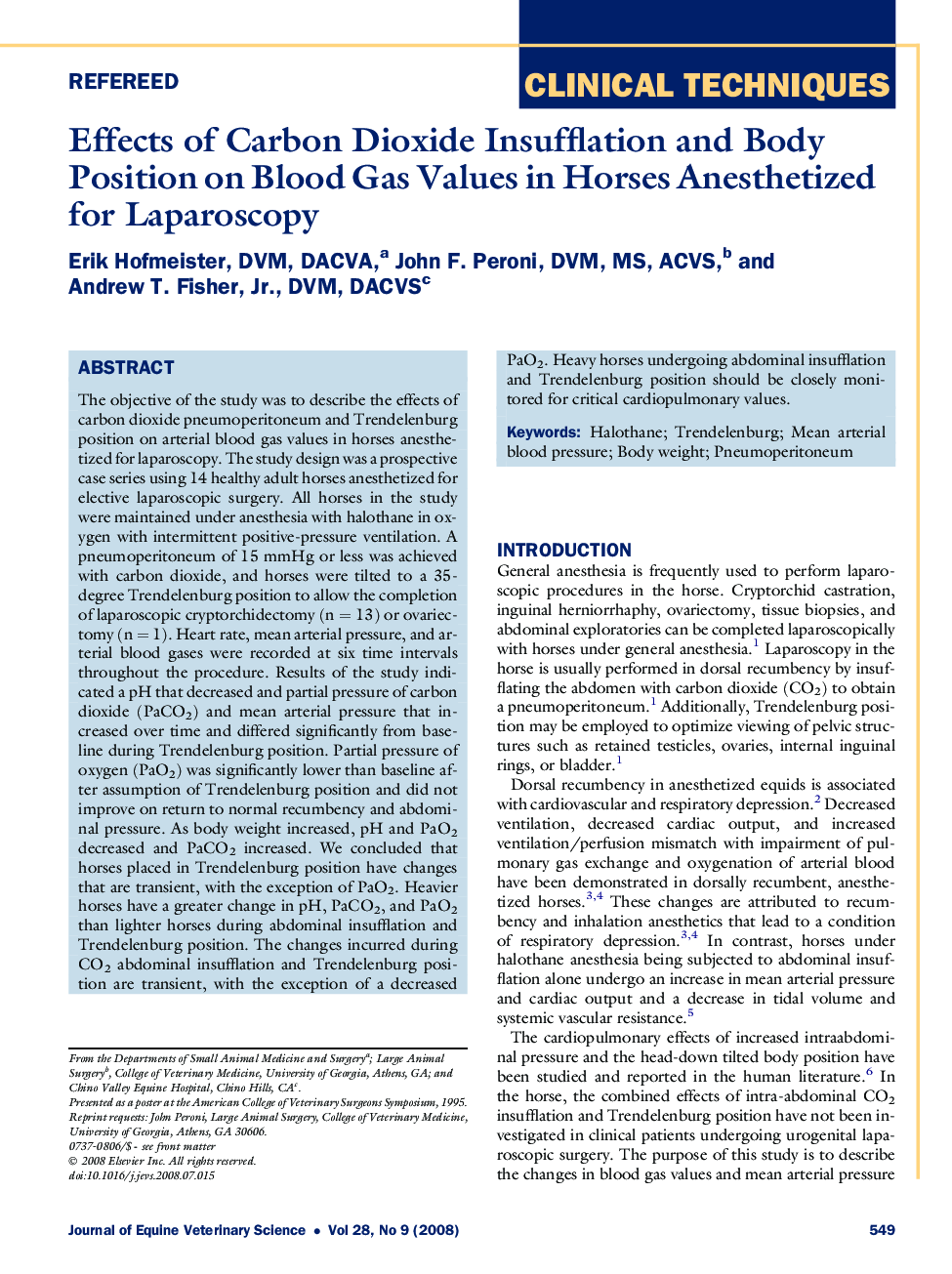| Article ID | Journal | Published Year | Pages | File Type |
|---|---|---|---|---|
| 2396556 | Journal of Equine Veterinary Science | 2008 | 5 Pages |
The objective of the study was to describe the effects of carbon dioxide pneumoperitoneum and Trendelenburg position on arterial blood gas values in horses anesthetized for laparoscopy. The study design was a prospective case series using 14 healthy adult horses anesthetized for elective laparoscopic surgery. All horses in the study were maintained under anesthesia with halothane in oxygen with intermittent positive-pressure ventilation. A pneumoperitoneum of 15 mmHg or less was achieved with carbon dioxide, and horses were tilted to a 35-degree Trendelenburg position to allow the completion of laparoscopic cryptorchidectomy (n = 13) or ovariectomy (n = 1). Heart rate, mean arterial pressure, and arterial blood gases were recorded at six time intervals throughout the procedure. Results of the study indicated a pH that decreased and partial pressure of carbon dioxide (PaCO2) and mean arterial pressure that increased over time and differed significantly from baseline during Trendelenburg position. Partial pressure of oxygen (PaO2) was significantly lower than baseline after assumption of Trendelenburg position and did not improve on return to normal recumbency and abdominal pressure. As body weight increased, pH and PaO2 decreased and PaCO2 increased. We concluded that horses placed in Trendelenburg position have changes that are transient, with the exception of PaO2. Heavier horses have a greater change in pH, PaCO2, and PaO2 than lighter horses during abdominal insufflation and Trendelenburg position. The changes incurred during CO2 abdominal insufflation and Trendelenburg position are transient, with the exception of a decreased PaO2. Heavy horses undergoing abdominal insufflation and Trendelenburg position should be closely monitored for critical cardiopulmonary values.
